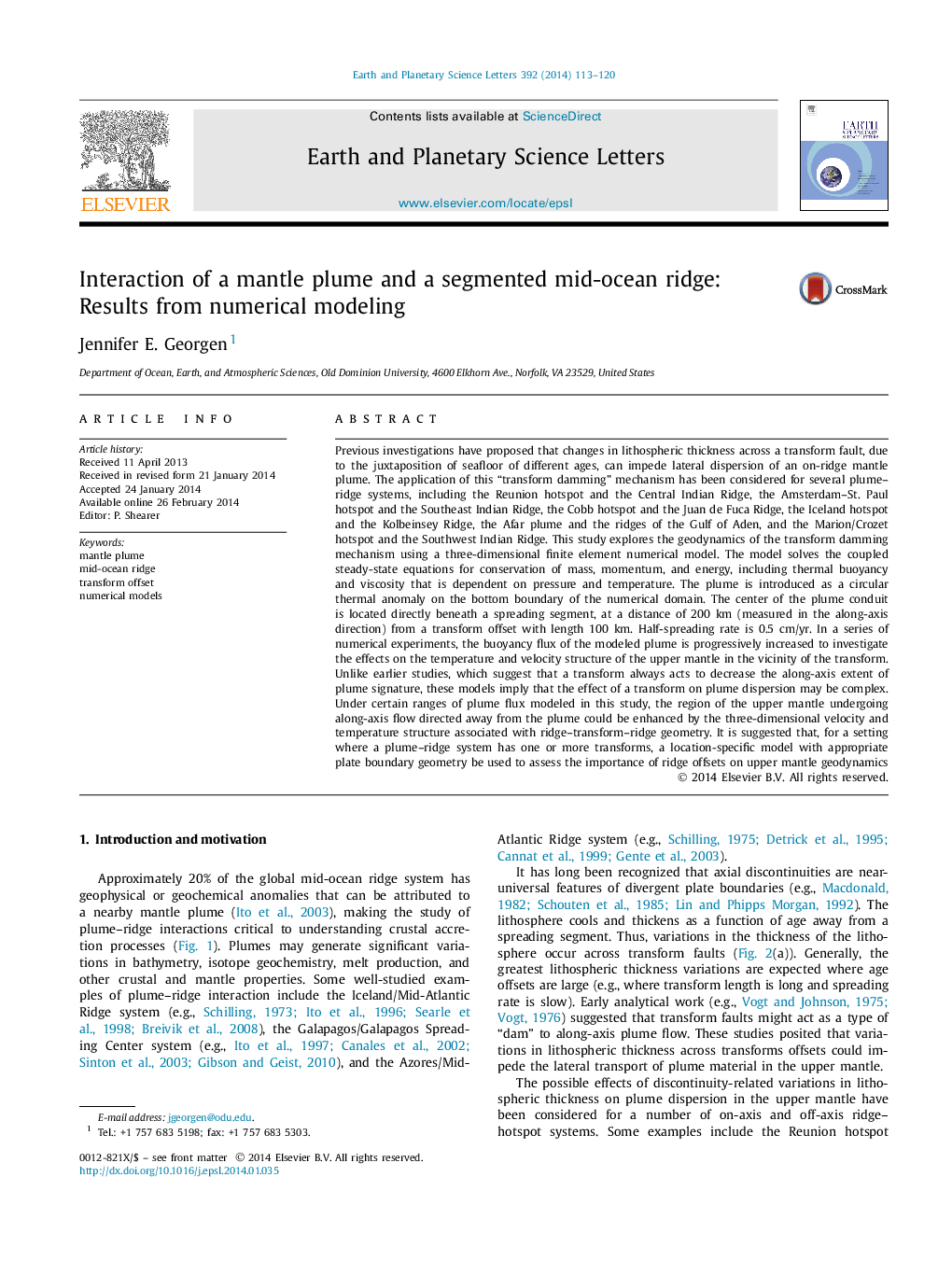| کد مقاله | کد نشریه | سال انتشار | مقاله انگلیسی | نسخه تمام متن |
|---|---|---|---|---|
| 6429490 | 1634764 | 2014 | 8 صفحه PDF | دانلود رایگان |
- Study of plume-ridge interactions near a transform offset using numerical modeling.
- Plume-transform interaction can affect plume dispersion, temperature/flow structure of upper mantle.
- Location-specific models are suggested to assess effect of transforms on plume flow.
Previous investigations have proposed that changes in lithospheric thickness across a transform fault, due to the juxtaposition of seafloor of different ages, can impede lateral dispersion of an on-ridge mantle plume. The application of this “transform damming” mechanism has been considered for several plume-ridge systems, including the Reunion hotspot and the Central Indian Ridge, the Amsterdam-St. Paul hotspot and the Southeast Indian Ridge, the Cobb hotspot and the Juan de Fuca Ridge, the Iceland hotspot and the Kolbeinsey Ridge, the Afar plume and the ridges of the Gulf of Aden, and the Marion/Crozet hotspot and the Southwest Indian Ridge. This study explores the geodynamics of the transform damming mechanism using a three-dimensional finite element numerical model. The model solves the coupled steady-state equations for conservation of mass, momentum, and energy, including thermal buoyancy and viscosity that is dependent on pressure and temperature. The plume is introduced as a circular thermal anomaly on the bottom boundary of the numerical domain. The center of the plume conduit is located directly beneath a spreading segment, at a distance of 200 km (measured in the along-axis direction) from a transform offset with length 100 km. Half-spreading rate is 0.5 cm/yr. In a series of numerical experiments, the buoyancy flux of the modeled plume is progressively increased to investigate the effects on the temperature and velocity structure of the upper mantle in the vicinity of the transform. Unlike earlier studies, which suggest that a transform always acts to decrease the along-axis extent of plume signature, these models imply that the effect of a transform on plume dispersion may be complex. Under certain ranges of plume flux modeled in this study, the region of the upper mantle undergoing along-axis flow directed away from the plume could be enhanced by the three-dimensional velocity and temperature structure associated with ridge-transform-ridge geometry. It is suggested that, for a setting where a plume-ridge system has one or more transforms, a location-specific model with appropriate plate boundary geometry be used to assess the importance of ridge offsets on upper mantle geodynamics
Journal: Earth and Planetary Science Letters - Volume 392, 15 April 2014, Pages 113-120
